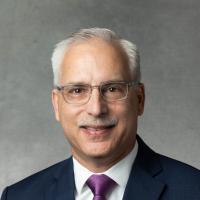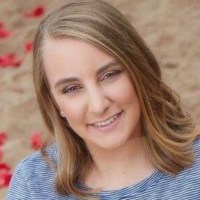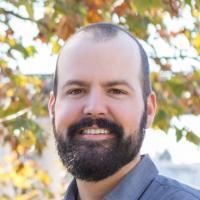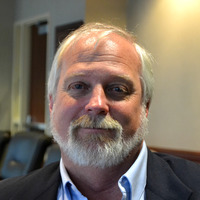What a Viral Music Video Can Teach us About Collaborating
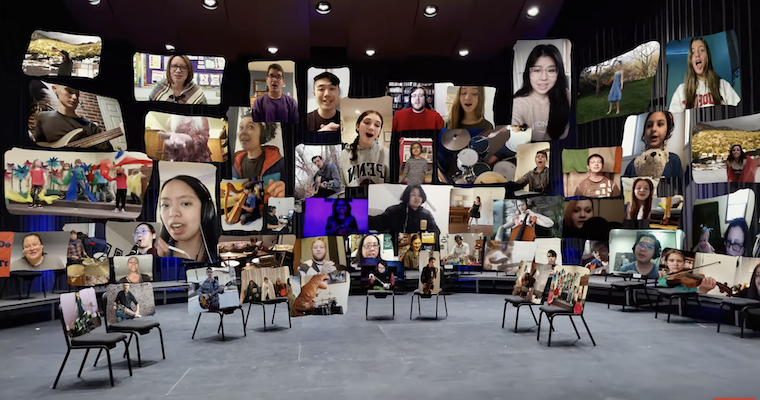
During COVID, thousands of musicians and others from around the world collaborated remotely on a music video, providing a great case study on how to work with people from many disciplines and specialties.
During the early days of the COVID-19 pandemic, OK Go released its song “All Together Now” which was created by the band members working from their own home music studios. The video was viewed more than 1.4 million times and raised money for Partners in Health, an organization dedicated to frontline health workers. And with help from the Playful Learning Lab (PLL) at the University of St. Thomas in St. Paul, Minnesota, it inspired six other videos of the song, made by approximately 15,000 musicians, artists, and students from over 35 states and 21 countries.
The process of making the original video, and bringing its creativity and joy to housebound cover bands around the world, provides a great case study on how to collaborate with people from many disciplines and specialties, either online or in person. This article explores how effective communication helped a large and diverse group of collaborators deliver a remarkably innovative and creative interdisciplinary project.
The Factors Behind Great Collaboration
In 1992, the Amherst H. Wilder Foundation commissioned researchers to complete a literature review to determine the necessary components of good collaboration. The researchers found six primary categories for successful collaborative experiences: environment, membership, process/structure, communications, purpose, and resources. At the core, of course, is the need for effective communication.
OK Go’s original video became the Art Together Now (ATN) project with help from University of St. Thomas’ Playful Learning Lab (PLL). The lab involves undergraduate research students, affiliated educators, and community partners who work together to create engaging, hands-on experiences for PK-12 students and educators, with a focus on fun.
The band’s lead singer, Damian Kulash, and the Playful Learning Lab’s director, Dr. AnnMarie Thomas, met at a conference and realized that there was opportunity for the two groups to work together. They created OK Go Sandbox, a collection of videos for classroom use, lesson plans, live events, and outreach to K-12 educators. This platform also allowed for the team to invite the world to build a new project based on the “All Together Now” song and video released by the band. This effort was referred to as “Art Together Now.”
The original “All Together Now” video is often referred to as a virtual performance, which involves each musican recording themselves singing to a pre-recorded accompaniment and then submitting it to a person who compiles all the videos into one performance recording. OK Go wanted to extend this idea of collaborative music-making to people from all over the world. The band made the sheet music for “All Together Now” available to anyone who asked for it, and invited them to submit their own versions of the song. With help from PLL, within six months the Art Together Now project resulted in six new videos made by approximately 15,000 musicians, artists, and students of all abilities, playing professional musical instruments and makeshift homemade ones.
Those involved in this project realized that clear and open communication was critical if the project was going to meet its goal. The factors listed in the Wilder Report as important include maintaining open and frequent communication, ensuring that the group has a shared vision for their work and making sure that clearly established informal and formal communication links are in place. The ATN project had all of these.
Adopting a Shared Mindset
Long before the musical arrangements were composed and recorded or any visual art was created, the leadership team of PLL held extensive discussions about potential directions for this project. At an early meeting about the project, the group openly discussed that the virtual choir concept had been become rather stale in the music community. It was suggested that involving instrumental musicians with varying musical abilities—everyone from beginners to highly gifted performers—might create something unique. Another person suggested that those who did not want to perform could be brought in to create visual art for the videos. Because of these direct and open conversations, the full team (OK Go plus PLL) were of the same mindset—trying to involve as many musicians and visual artists as possible to create something new and different.
Communicating the Vision
Early in the process, the team had to determine how to describe the musical intent of the project to those who might be interested in submitting their own performances. While the music team did not want to hinder creativity, they also wanted to make sure that contributors understood the innate musical ideas behind the project. To do that, the music team developed a “demo recording” to express a cohesive vision of the hopes for the final project. It is one thing to try to explain a musical vision using descriptive terms, but we found it worked better to communicate our ideas through a demo recording. In the end, that demo gave everyone a tangible vision of OK Go’s original concept. This is a reminder that communication can come in many forms: In this case, we found the demo as the best way to communicate a unified musical goal for this project.
Wilder’s factors of “open communication” and “shared vision” were prevalent throughout this project. Its very short timeline meant that regular, honest dialogue about progress and the overall direction of the project was paramount. When someone could not meet a deadline, others quickly jumped in to accomplish whatever needed to be done. In addition, constantly reinforcing the overall purpose and vision of the project—involving many thousands of people in a creative endeavor—helped to ensure that everyone involved in the project maintained a sense of direction and the desired outcome. Of all these, it was the clear, open and direct communication with all of the team members and collaborators that secured the success of the project.
Harnessing the Benefits of Technology
One of the reasons that communication was successful was because the collaborators had become so comfortable using Zoom and other tools that let them meet online, launch and manage discussions, and make decisions in a short time frame. These tools became a normal part of the communication process. Email as well as various document sharing applications allowed the group to communicate and make decisions quickly. While many challenges hindered collaboration throughout the pandemic and the time that followed, electronic communication had a very positive impact on the ATN project.
By focusing its attention on strong communication within its collaborative efforts, the ATN project met its goal. Because the project embraced Wilder’s best practices for collaboration, ATN also helped an interdisciplinary body of students and musicians learn how to communicate in a creative and collaborative endeavor. As a result of this project, what started as the four OK Go band members making music isolated from one another evolved into a project involving a global audience of thousands.
Takeaways for Other Collaborative Projects
We hope that this example illuminates how effective communication allowed the ATN project to be a success and provides inspiration for others to pursue similar projects within their own companies or communities, either in person or online. Here are some things to consider:
- At the very beginning, agree on a shared goal for your project – what you want it to look like and accomplish.
- Use video or another creative product, whatever it takes, to communicate this vision clearly to everybody who wants to get involved.
- Communicate regularly on the progress.If someone falls behind, someone else should jump in to make sure that part of the project is delivered on schedule.
- Because of the pandemic people are already very comfortable with technologies for remote learning and collaboration. Harness all of them to keep your project on schedule and on target.
References
Kelly, C. (2016). Teacher as facilitator of learning. Teaching and Learning at Business Schools: Transforming Business Education, 2, 3-16.
Smith, B. L., & MacGregor, J. T. (1992). What is collaborative learning., 233-267.
Mattessich, P. W., & Monsey, B. R. (1992). Collaboration: what makes it work. A review of research literature on factors influencing successful collaboration. Amherst H. Wilder Foundation, 919 Lafond, St. Paul, MN 55104.
Watch
Here's the original "All Together Now" virtual video by OK Go and one of the six "Art Together Now" videos by artists from around the world, created during the Covid-19 Pandemic.

